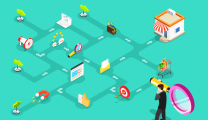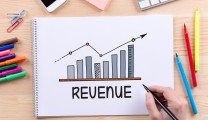1. What is customer journey?
Customer journey is the journey a person takes from becoming aware of a brand to becoming a customer, leading to purchase and ultimately customer loyalty.
Currently, building a customer journey is a strategic business approach that many businesses around the world are implementing. Because this is an approach to customers to better understand their needs and optimize customer experience. In addition, businesses can receive some benefits when using customer journey:
- Understanding customers: Understanding customer shopping behavior helps businesses improve and optimize sales processes and introduce products to users.
- Customer reach: Know which sales channels reach the most customers. From there, focus on developing the most effective means and help businesses save time and money.
- Quality improvement: Know which products and services are not popular with consumers. Thereby, improve product quality to bring different experiences to customers.
- Marketing support: Identify the business's target customers and help the marketing department easily promote products to customers.
- Loyal customers: Businesses will have a series of loyal customers if they use customer journey to promote future shopping habits and meet all consumer desires.
2. Steps to build a customer journey map
2.1. Clearly define your goals before building a customer journey map
Before building a customer journey map, businesses need to clearly define their goals:
- What is the purpose of creating a map?
- What is the goal of the map that the business wants to aim for?
- Who is the subject?
- Based on what?
Based on these criteria, businesses can create a buyer persona and collect relevant information about consumer demographics, psychographics, and shopping habits. This helps businesses shape the steps to turn customers into potential customers.
2.2. Clearly identify target customers.
After determining the goal of building a customer journey map, businesses need to clearly identify the target customers they want to target. Businesses need to select the outstanding characteristics of the customer's shopping habits that were analyzed earlier and focus on one or two target product groups among them.
If a business reaches out to too many target groups, the map will not accurately reflect the customer experience with the product. Identifying and focusing on one or two target customer groups helps businesses understand the customer experience more easily.
2.3. List all customer touchpoints with the business.
The next step is to record how customers interact with the business. First, businesses need to list all the touchpoints and then track how customers interact with the business. For example: messaging via the website, notification of a canceled order, searching for products with the company name on Google, etc.
This step is extremely important in determining the customer's shopping behavior. Through this, businesses should consider to choose which touchpoints are increasing or decreasing to help customers achieve their desires.
2.4. Experience the customer journey from the customer's perspective
Businesses need to put themselves in the customer's perspective to experience the customer journey. Because every customer action comes from emotions and motivations. And each customer's emotions will change according to each stage of the customer journey. Motivations are often pain points that drive customers to make purchases.
Once you put yourself in the customer’s shoes, you’ll know what content to provide at the right time to hit each customer’s emotions and pain points. Furthermore, you’ll be able to identify barriers to purchase, which are often high costs.
2.5. Analyze and draw customer journey map
After identifying and experiencing the customer journey for themselves, businesses need to analyze and draw a customer journey map. Analyzing the results will help businesses see whether customers' desires have been met or not. In this way, businesses can ensure that they are providing valuable services and experiences.
Most importantly, the company can find solutions to consumers' purchasing motivations. Then draw a customer journey map with 4 necessary elements: Actions, Motivations, Questions and Pain Points.
2.6. Update customer journey map over time
Businesses need to update customer journeys regularly because customer behavior and shopping habits are not fixed and change frequently. Therefore, monitor and analyze data in customer journeys to update customer trends and desires, promptly respond and give appropriate feedback to customer needs.
3. Optimize customer journey with CRM software
Collecting and analyzing customer data is an important step in the process of building a customer journey map. To optimize and speed up the data collection process, businesses can combine the use of CRM software in the process of building a customer journey map. In addition, CRM software also brings businesses advantages such as:
- Identify customer segments: CRM helps businesses collect and analyze customer data such as demographics, behavior, and preferences. Businesses can use it to create customer segments based on common characteristics and needs.
- List customer touchpoints: CRM can identify and map the touchpoints that customers have previously interacted with the business such as website, email, social media, etc. Businesses can use it to identify customer actions, emotions, pain points and desires at each touchpoint.
- Track and measure customer feedback: CRM collects and measures customer feedback through reviews, ratings, and surveys. Businesses can use it to evaluate performance and identify areas for improvement.
- Automate customer communication: CRM automates customer interactions by sending thank you emails, reminders, confirmation messages, etc. This helps businesses save time, increase productivity, and enhance customer loyalty.
- Tool integration: CRM helps integrate data and processes with other tools such as communication channels, email marketing, etc. Businesses can use CRM to synchronize their data across different channels and ensure the customer journey runs smoothly.
In short, customer journey is a method to help businesses better understand customer needs.













Replies to This Discussion